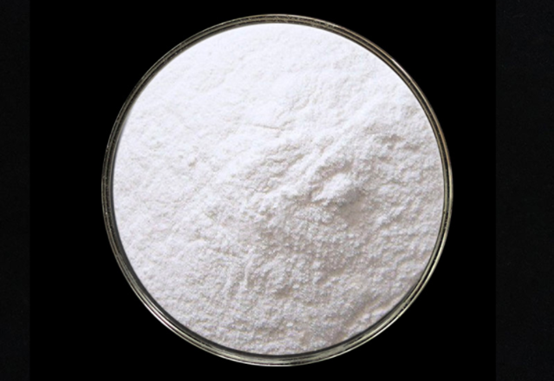close
Choose Your Site
Global
Social Media
Views: 0 Author: Site Editor Publish Time: 2025-11-13 Origin: Site




Metal processing includes metal cleaning, surface finishing, and various machining operations such as turning, milling, planing, drilling, rolling, and casting. To reduce labor intensity, improve product quality, save energy, and lower production costs, various additives are required during these processes. Among them, surfactants play a particularly important role.
Applications of Surfactants in Metal Processing
Surfactants are substances that can significantly reduce the surface tension of liquids or the interfacial tension between two liquids. Their molecules consist of two parts: a polar hydrophilic group and a non-polar hydrophobic group. Common hydrophilic groups include carboxyl, sulfate, sulfonate, amino, quaternary ammonium, and hydroxyl groups, while the hydrophobic groups are typically long-chain alkyl or aromatic hydrocarbon structures.
Because of their dual nature—being both hydrophilic and lipophilic—they modify the surface or interfacial properties of cleaning solutions during chemical cleaning, resulting in lower surface tension.
Surfactants are classified into anionic, cationic, nonionic, and amphoteric types according to the charge carried by their surface-active groups. They exhibit properties such as wetting, foaming, solubilization, and defoaming.

Metal cleaning is essentially involved throughout the entire metal processing workflow. Cleaning agents are mainly composed of three major components: primary cleaning agents, corrosion inhibitors, and surfactants.
Surfactants play multiple roles in chemical cleaning, including adsorption, penetration, emulsification, solubilization, and detergency. In chemical cleaning processes, surfactants are not only used as auxiliary additives but can also serve as the main active ingredients. They are particularly important in processes such as pickling, alkaline cleaning, corrosion inhibition, degreasing, and disinfection, where their role has become increasingly prominent.
At present, water-based cleaning—centered around surfactants—has overcome many shortcomings associated with traditional acid or alkaline chemical cleaning agents and has become the main development direction for metal cleaning.
Advantages of water-based metal cleaners:
High cleaning efficiency and strong detergency
Good safety profile and environmentally friendly
Energy-saving and cost-effective
No damage to the cleaned metal parts and no corrosion after cleaning
Water-based cleaning agents usually use blends of nonionic surfactants and anionic surfactants as the primary components, supplemented with various auxiliary additives. Nonionic surfactants offer strong detergency and good rust-preventive and corrosion-inhibiting capabilities, while anionic surfactants enhance and improve the overall performance of the cleaning formulation.
The cleaning mechanism relies on the wetting, penetration, emulsifying, solubilizing, and dispersing actions of surfactants to weaken the adhesion of oil contaminants on metal surfaces. Then, through mechanical stirring, brushing, heating, ultrasound, or other physical methods, the oil film is separated from the metal surface and becomes emulsified or dispersed into the cleaning solution.
Common surfactants used in metal cleaning include:
Fatty alcohol polyoxyethylene ethers
Alkylphenol polyoxyethylene ethers
Sodium dodecylbenzene sulfonate
Lauryl diglycolamide
Sodium methoxy fatty amide benzene sulfonate
Phosphating refers to treating metals with dilute solutions containing phosphoric acid, phosphates, and other chemicals. When the metal surface reacts chemically with the phosphoric acid and phosphate medium, it converts into a dense, insoluble metal phosphate layer that provides moderate corrosion protection.
This phosphate conversion coating on metals has multiple functions:
It improves the adhesion and corrosion resistance of paints applied to the metal surface.
It can serve as a carrier for rust preventive oils.
It acts as a lubricant carrier during metal cold-working processes.
It can also be used as a lubricant at frictional interfaces.
To improve the structure of the phosphate coating and enhance the phosphating effect, various additives are incorporated into phosphating solutions. Among them, surfactants play several important roles:
They emulsify and solubilize residual oil contaminants on metal surfaces and prevent redeposition of dirt.
They promote wetting and penetration, improving contact between the phosphating solution and the metal surface.
They reduce surface tension, facilitating the release of hydrogen gas generated during the phosphating reaction, strengthening cathodic depolarization, and thereby accelerating the film-forming process.
Surfactants commonly used in phosphating treatments are nonionic surfactants formed from the condensation of ethylene oxide with various hydrophobic long-chain hydrocarbons.
During electroplating, various additives are introduced to improve the performance of the electrolyte and enhance the quality of the plated coating. Among these additives, surfactants are one of the most important categories. They help level and brighten the coating, improve dispersion, modify the physical properties of the deposit, and suppress the release of acid mist.
Common surfactants used in electroplating include:
Pingpingjia (AEO series nonionic surfactants)
OP emulsifiers (alkylphenol ethoxylates)
Sodium lauryl sulfate (SLS)
Sodium methylene-bis-naphthalene sulfonate
Fluorinated surfactants
Fatty acid polyoxyethylene esters
Polyoxyethylene castor oil derivatives
content is empty!
NEWSLETTER SIGN UP